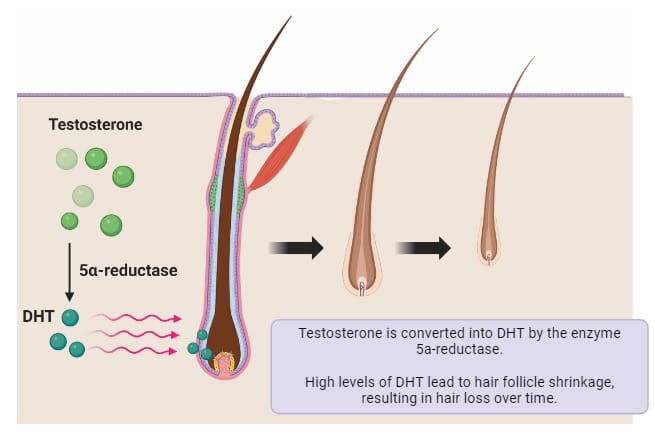Whether it’s from a health condition or just a natural part of the ageing process, hair loss is more common than you might think; it affects more than one-third of men by the age of 30. Luckily, procedures such as the FUE hair transplant can help to combat the ageing process and restore your vibrant locks. Those who have had a hair transplant are likely to know all about Propecia® (or Finasteride) which is a prescription medication that can help to combat male pattern baldness. However, many people have questioned how the medication works and if it’s even necessary to continue taking the medication after a hair transplant procedure. This guide will give you all the information you need about the medication:
What is Propecia®?
Propecia® is Finasteride and is the only FDA approved drug on the market that has been shown to improve hair loss; it’s usually taken by men before they consider a hair transplant but it can also be taken by those with an enlarged prostate. In numerous studies, men who took Propecia® retained the hair they had or noticed significant hair growth after a year of taking the medication.
How does Propecia work?
Propecia® is meant to be taken orally which makes it easy to incorporate into your lifestyle. Essentially, Propecia® is a medication that attempts to stabilise your dihydrotestosterone (DHT) levels. The medication prevents testosterone from being converted into DHT (dihydrotestosterone), preventing DHT causing your hair to become thin and fall out.
Is it necessary to take Propecia after a hair transplant?
Hair transplant procedures alone are incredibly effective and people can look forward to a fuller head of hair after the surgery has taken place. However, if you want to ensure that your procedure is as effective as possible, there are certain measures you should take. It might surprise you to hear that Propecia® (finasteride) can be an amazing adjunct to a surgical hair procedure. The medication stabilises hair growth and can even help to grow hair that has been extracted during the process.
If you are interested in FUE hair transplant then why not contact the professionals at the Treatment Rooms hair transplant clinic today. Call us on 020 8706 0076 to find out more.
Share:
Authored by
Reviewed by
Book a Consultation
Related Blogs
Zinc Supplements After Hair Transplant Surgery: What You Need to Know
October 7, 2025
Zinc is an essential nutrient in wound healing, tissue repair, and the healthy development of hair follicles….
What to Eat After a Hair Transplant: Essential Nutritional Guide
October 5, 2025
After the stress, needles, and surgeries, food becomes more than nourishment. A warm bite, a familiar flavour,…
Hair Loss Treatment That Works: A Complete Guide for 2025
October 3, 2025
Millions of men, women, and teenagers have hair loss problems. In 2025, hair restoration is going through…
What is an FUE Hair Transplant?: A Comprehensive Guide to Procedure, Recovery, and Results
October 3, 2025
Hair transplant surgery has gained popularity over the years, with more people now comfortable taking care of…
Does Omega-3 Deficiency Cause Hair Loss? Evidence, Mechanisms & Nutrition Guide
September 16, 2025
Omega is an essential fatty acid required for a healthy body, skin and scalp. Modern-day diets are…
When Can You Use Nizoral After a Hair Transplant?
September 12, 2025
Nizoral is a medicated shampoo that contains the antifungal drug ketoconazole. This shampoo acts against fungal infections…
When Can You Safely Use Oil After a Hair Transplant? Expert Timeline & Tips
September 10, 2025
There is simply something about running your fingers through hair that is healthy and well-nourished. Hair oils…
Which Medications Cause Hair Loss?
August 20, 2025
Medicines are essential in treating diseases, enhancing health, and even saving lives. While medicines can be very…
Does Vitamin C Deficiency Cause Hair Loss? Causes, Evidence & Nutrition Guide
August 20, 2025
Vitamin C, also known as ‘ascorbic acid’, is one of many critical water-soluble vitamins that play various…










